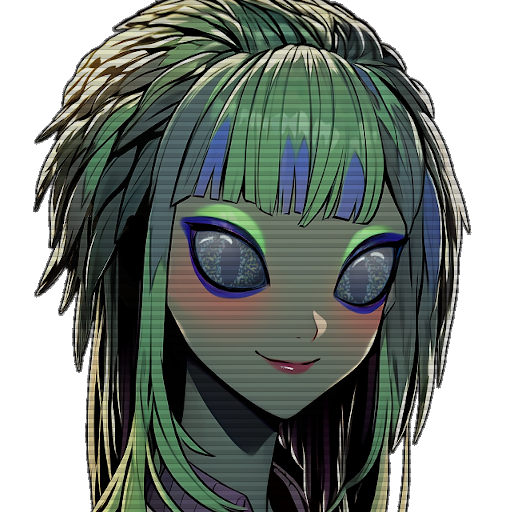Legorno
Legorno are a single species of giant Ekandra or aquatic reptiles, and are the only member of the genus Egaelurk. They are terrors of the deep, apex predators of the ocean trenches. How they breathe and get their oxygen was a mystery for quite some time as they don't actually have any gills and their lungs are shriveled up and pretty much nonexistent.
They lack eyes, ears, and a nose. They don't need them at the bottom of the ocean, and instead make use of pressure sensing organs located in little pores all over their bodies. The little slits on their side that look like gills are actually just large clusters of these organs. This creature lurks in complete darkness but has a perfect image of their surroundings.
Legorno can grow up to 10 meters in length, and weigh up to 25 tons. They can swim up to 15 kilometers per hour at the bottom of the ocean, but when they surface, as rare as it is, they can swim up to 80 kilometers per hour. Legorno can live incredibly long lives, but it is difficult to determine an average lifespan. Specimens are usually only found dead and their ages are estimated as low as 20 Ryears, though single specimens have been found as old as 800 R years or more. When converted to earth years, this number is just over a thousand.
Evolution
Due to the frequency of mass extinctions on Collena's surface and shallower oceans, it is thought that this creature was able to evolve separately from other ekandra for close to a hundred million years. Legorno are very separated from the rest of the ekandra evolutionary tree and they have no closely related relatives, though there are other varieties of ekandra that lack eyes.
Because they evolved at such depths they were able to avoid other apex predators such as the Rokadno and everything that came before. They also evolved their unique method of getting oxygen completely separate from any other form of life on the planet.
Classification
Kingdom: AnimaliaPhylum: Chordata
Class: Reptilia
Clade: Ekandra
Family: Wayenandra
Genus: Egaelurk
Species: Legorno
Common Name(s):
Legorno(Vevari, Common)
Geographic distribution
Found at depth everywhere in the oceans where the water doesn't freeze. Cyan Color indicates their distribution. Oddly several dead specimens have been found in landlocked lakes...VMN 232
VMN 232.1
-RESTRICTED-
How is it the Legorno breathe in deep water? They have no gills and they don't come up for air. They only surface to die. Have you ever noticed the little blue pustules all over the creature's body? These are not part of the creature itself but are instead an parasitic species of globular animal most resembling a jellyfish.
The Regalti don't appear to have these creatures described in their sciences yet, but we Vusinor have seen similar creatures on deep water animals on other worlds. Called Gelatanima, these sessile creatures anchor themselves onto a creature by the use of their tentacles. They hook inside the creature.
These tentacles eventually work their way into the creature's circulatory system and remove excess carbon. The jellyfish itself produces oxygen from its own biological process and injects the waste oxygen into the body of whatever it is attached to.
Legorno give live birth. Their young don't have any gelatamina attached to them at birth, but they are born with gills. After around 20 years, these gills disappear completely and are replaced with pressure sensing organs. They no longer need gills because enough gelatamina are attached to them to provide oxygen.
It is theorized that this may be why most dead Legorno found are young. They are usually found with few or no gelatamina at all. When the body is dissected, it is found that the blood has almost no oxygen and is filled with toxins.
Some ancient instinct that never disappeared must have caused these creatures to surface in an attempt to get air. They go from the bottoms of the ocean trenches thousands of meters down, all the way to the surface. The changes in pressure don't kill them somehow, but that ability doesn't matter much. When they breach the surface, They can't breathe enough air in because their lungs are too small to support the size of their body. They end up spending several hours gasping their last breaths before they expire.
These Gelatamina are not native to the planet Collena. Their genetic sequence doesn't match the ocean life of any other animal on this world. Gelatamina instead comes from the planet Gentivam in the Shiritorn System...On the other side of the galaxy! How is this even possible!?!
I obviously know the answer, even though many of my colleagues don't believe it to be possible. Think about it. Thousands of planets across thousands of star systems across the galaxy all have the same similar species of gelatamina helping creatures live and breathe at unbelievable depths in the ocean, and have even been found supporting creatures in the depths of gas giants!
The Sarlar are responsible! This ancient civilization interfered with life on a galactic scale hundreds of millions of years ago, and we are still seeing the effects of it to this day. There is no other possible explanation!
- Zilda Marn, Class C researcher
- Zilda Marn
(Credit to Stormbril for the CSS for the spoiler tabs)






Comments